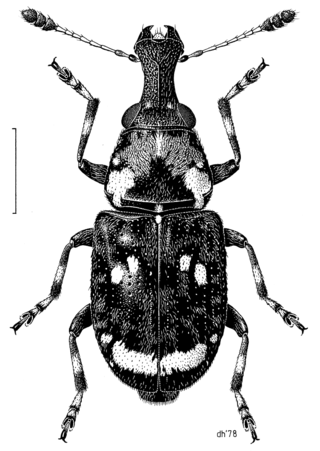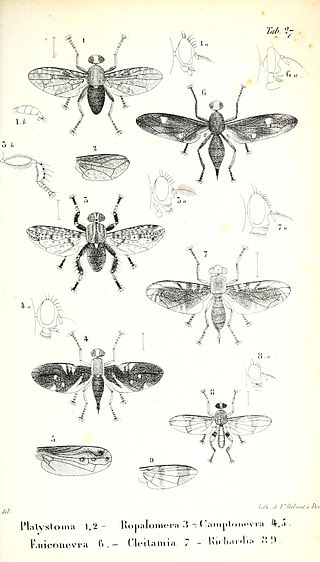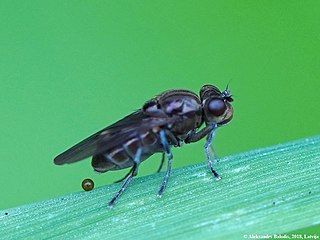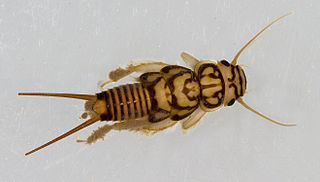
Herring are various species of forage fish, mostly belonging to the family of Clupeidae.

Convolvulaceae, commonly called the bindweeds or morning glories, is a family of about 60 genera and more than 1,650 species. These species are primarily herbaceous vines, but also include trees, shrubs and herbs. The tubers of several species are edible, the best known of which is the sweet potato.

Anthribidae is a family of beetles also known as fungus weevils. The antennae are not elbowed, may occasionally be longer than the body and thread-like, and can be the longest of any members of Curculionoidea. As in the Nemonychidae, the labrum appears as a separate segment to the clypeus, and the maxillary palps are long and projecting.
The National Biodiversity Network (UK) (NBN) is a collaborative venture set up in 2000 in the United Kingdom committed to making biodiversity information available through various media, including on the internet via the NBN Atlas—the data search website of the NBN.

Dolichognatha is a genus of tropical and subtropical long-jawed orb-weavers that was first described by Octavius Pickard-Cambridge in 1869. Originally placed with the Archaeidae, it was transferred to the Araneidae in 1967, and to the Tetragnathidae in 1981.
Dolichognatha quadrituberculata is a species of long-jawed orb weaver in the spider family Tetragnathidae. It is found in Peru.
The World Register of Marine Species (WoRMS) is a taxonomic database that aims to provide an authoritative and comprehensive list of names of marine organisms.

The Ropalomeridae are a family of acalyptrate flies.

Maua is a genus of cicadas from Southeast Asia. The males possess two pairs of dark ventral abdominal tubercles on third and fourth sternites.

Rhodopina is a genus of longhorn beetles of the subfamily Lamiinae, containing the following species:
Pterolophia quadrituberculata is a species of beetle in the family Cerambycidae. It was described by Stephan von Breuning and de Jong in 1941. It is endemic to Indonesia.
Rhodopina quadrituberculata is a species of beetle in the family Cerambycidae. It was described by Per Olof Christopher Aurivillius in 1920. It is known from India.
Parasmodix is a genus of spiders in the family Thomisidae. It was first described in 1966 by Jézéquel. As of 2017, it contains only one species, Parasmodix quadrituberculata, found in Ivory Coast.

Parydra fossarum is a species of fly in the family Ephydridae. It is found in the Palearctic. May to December. Associated with wetland or coastal habitats.

Parydra aquila is a species of fly in the family Ephydridae. It is found in the Palearctic. Jizz Face brilliant green-black. Tarsi red brown, never black. Long. : 3,5–5 mm. May to December. By ponds.

Agnetina is a genus of common stoneflies in the family Perlidae. There are at least 30 described species in Agnetina.

Parydra is a genus of shore flies in the family Ephydridae. There are at least 70 described species in Parydra.

Brachystomella is a genus of springtails in the family Brachystomellidae. There are more than 20 described species in Brachystomella.
Typhoptera is an Asian genus of bush-crickets in the tribe Cymatomerini and the subfamily Pseudophyllinae. Species are recorded from India, Indo-China and Malesia.
Animal Ethics is a nonprofit organization formed to promote discussion and debate around issues in animal ethics and to provide information and resources for animal advocates. They also do outreach work in several countries on the issue of speciesism. Their aim is to create a world where moral consideration is extended to all sentient beings. The organization's website covers topics such as speciesism, sentience, veganism and wild animal suffering and has content translated into several languages.











